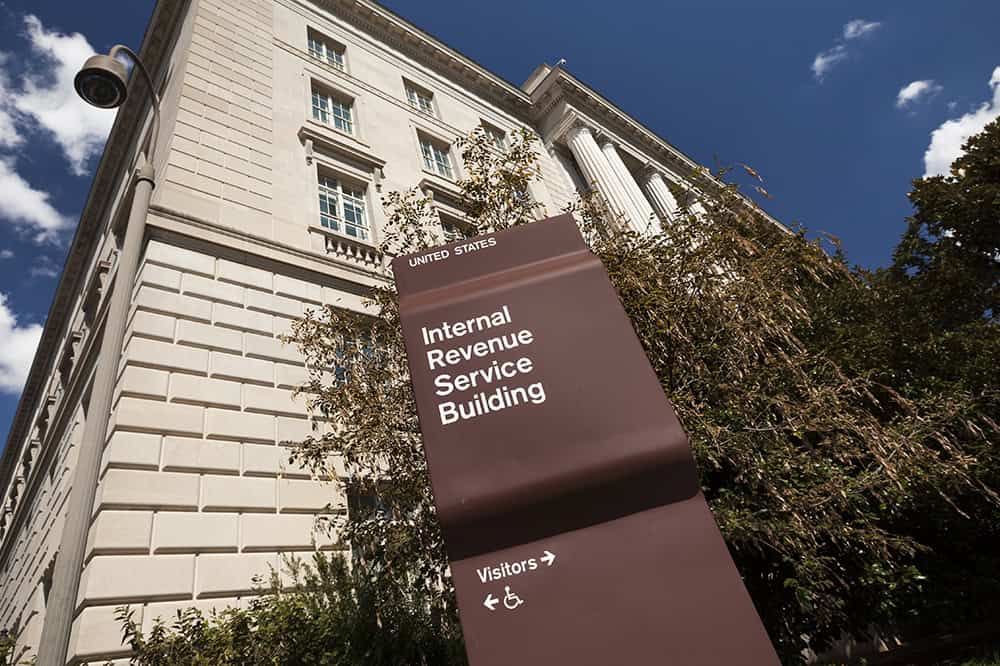The U.S. corporate tax system is a subject of frequent debate, with significant implications for the nation’s economy and fiscal outlook. Over the past several years, lawmakers from both parties have pursued major changes to this area of the tax code, including the enactment of the 2017 Tax Cuts and Jobs Act (TCJA), which dramatically reduced the corporate tax rate.
Presently, revenues raised by the corporate income tax represent the third-largest category of federal tax revenue in the United States, trailing those generated from the individual income and payroll taxes. This explainer describes how the U.S. corporate income tax system works, the ways it has evolved in recent years, and the implications for the United States’ fiscal and economic condition.
How Does the U.S. Corporate Income Tax Work?
Like most other countries, the United States levies a tax on the net profits — that is, the total income minus the costs associated with generating that income — of corporations. The TCJA, enacted in December 2017, reduced the federal tax rate on corporations to 21 percent, a decrease of 14 percentage points from its previous level of 35 percent. The current rate of 21 percent is low by historical standards — in the 1950s and 1960s, the statutory rate averaged over 50 percent.
The current federal corporate tax rate is applied to all business income of C corporations, an Internal Revenue Service (IRS) designation that distinguishes a business as a taxable entity. Additionally, 44 states and the District of Columbia impose their own taxes on corporate income. Therefore, a C corporation operating in the United States could face a combined tax rate in excess of 21 percent. In 2022, corporations paid an average combined tax rate of 26 percent. For context, the average combined national and sub-national corporate income tax rate among G7 countries was 26 percent.
Importantly, not all businesses are taxed as corporations. Pass-through businesses, such as sole proprietorships, partnerships, S corporations, and limited liability companies allocate profits to their owners who then pay taxes on those profits through the individual income tax code. In recent years, pass-through entities have grown to represent an increasingly large percentage of all businesses, and therefore business income, in the United States. In 1980, for example, C corporations represented 17 percent of all businesses, but by 2015 (the year for which the most recent data are available) had come to represent just 5 percent. S corporations (companies with a small number of shareholders and who elect to pass corporate income, losses, deductions, and credits through to their shareholders for federal tax purposes) experienced the largest increase over this period, growing from just 4 percent of all businesses in 1980 to 13 percent in 2015.
How Much Revenue from the Corporate Income Tax Does the Federal Government Collect?
Corporate income taxes are the third-largest source of revenues for the federal government. However, as a share of total federal tax collections, the corporate income tax accounts for a relatively small amount. In 2023, the federal government is projected to collect $475 billion from the corporate income tax, just 10 percent of the total $4.8 trillion in federal tax revenues that year.
As the statutory rate has decreased and the prevalence of pass-through businesses has increased, revenues from corporate taxes have declined as a share of GDP. In the 1950s and 1960s, corporate tax revenues represented an average of 4.2 percent of GDP — in 2022, they represented just 1.7 percent.
The share of corporate income tax revenues as a percentage of the economy in the United States is one of the lowest among G7 countries who, on average, collect 2.3 percent of GDP from that source.
One reason that corporate income tax revenues represent such a small percentage relative to the size of the U.S. economy is the offsetting effect of tax expenditures. Tax expenditures include exclusions, exemptions, deductions, and credits that reduce total tax liability. In 2022, the reduced tax rate on the income of controlled foreign corporations, the credit for depreciation of business equipment, and the credit for increasing research and development activities collectively reduced total federal corporate income tax revenues by over $100 billion. In 2023, the United States will forgo $161 billion in revenues due to corporate tax expenditures.
Conclusion
The federal government collects low levels of revenues from the corporate income tax system and forgoes billions of dollars in collections to tax expenditures. As annual deficits continue to widen and the national debt reaches historically unprecedented levels, many economists and experts suggest various tax reforms, including some to the corporate tax code that can help make our nation’s fiscal outlook more sustainable.
Photo by Inverse Couple Images/Getty Images
Further Reading
Should the U.S. Change the Corporate Tax Rate in 2025?
Here’s why lawmakers lowered the corporate tax rate in 2017, how the lower rate impacted the U.S., and how the rate might be reformed in 2025.
Eight of the Largest Tax Breaks Explained
Tax breaks totaled over $1.9 trillion in 2024. That’s more than the government spends on Social Security, defense, or Medicare and Medicaid.
The U.S. Forgoes Hundreds of Billions of Dollars Each Year Due to Unpaid Taxes
Cracking down on the tax gap would not only introduce more fairness into the system, but it could be a big help for our nation’s fiscal imbalance.


